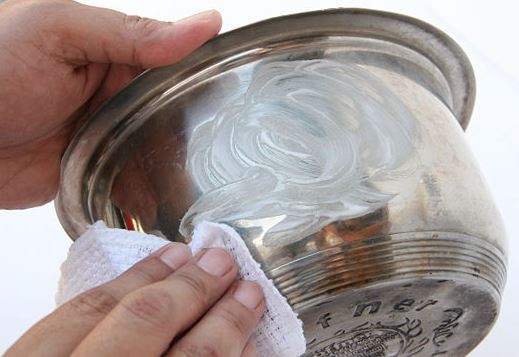Stainless Steel – Cleaning Surface Contaminants:
| Type of Contamination | Cleaning Agent |
| Grease, oils | Soapy water, cleaning creams, alcohol-based agents, acetone. |
| Limescale deposits (hard water) | Diluted vinegar, citric acid. |
| Coffee stains | Baking soda. |
| Tea stains | Washing soda (sodium carbonate), cleaning creams. |
| Adhesive residues | Alcohol- or acetone-based solvents. |
| Fingerprints | Soapy water, glass cleaners, mild detergents, damp microfiber cloth. |
| Graffiti and paints | Paint removers, either alkaline or solvent-based. |
| Mortar or cement stains | 10–15% phosphoric acid solution, diluted vinegar (1 part vinegar, 3 parts water). |
| Heavily neglected surfaces, stubborn stains | Metal polishing pastes (similar to those used for chrome parts), phosphoric acid-based products. |
| Iron particles – light discoloration | Cleaners with mild calcium carbonate additives, citric acid-based products, mild household creams or pastes. |
| Iron particles – fresh grinding dust | Saturated oxalic acid solution (leave on the surface for several minutes, rinse with water, and dry). |
| Iron particles – moderate rust discoloration | Phosphoric acid-based cleaners, saturated oxalic acid solution, nitric acid solution with warm water in a 1:9 ratio (leave on for 30–60 minutes, rinse with water, and dry). |
| Iron particles – heavy rust stains caused by corrosion of iron residues | Degreasing, pickling, passivation. |
| After cleaning, rinse surfaces thoroughly with water and, if possible, dry them completely. | |
Comments are closed.

